
The music of the Isle of Man reflects Celtic, Norse and other influences, including those from its neighbours, Scotland, Ireland, England and Wales. The Isle of Man is a small island nation in the Irish Sea, between Great Britain and Ireland.
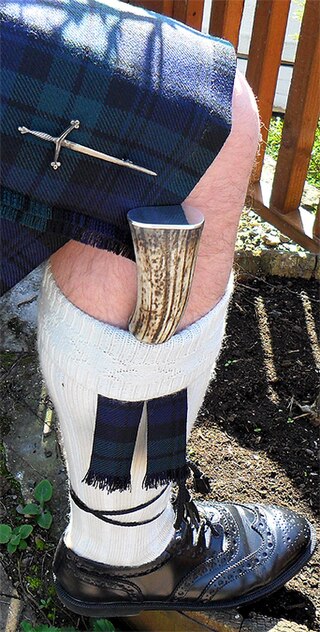
The sgian-dubh – also anglicized as skene-dhu – is a small, single-edged knife worn as part of traditional Scottish Highland dress. It is now worn tucked into the top of the kilt hose with only the upper portion of the hilt visible. The sgian-dubh is normally worn on the same side as the dominant hand.
A dirk is a long-bladed thrusting dagger. Historically, it gained its name from the Highland dirk where it was a personal weapon of officers engaged in naval hand-to-hand combat during the Age of Sail as well as the personal sidearm of Highlanders. It was also the traditional sidearm of the Highland Clansman and later used by the officers, pipers, and drummers of Scottish Highland regiments around 1725 to 1800 and by Japanese naval officers.
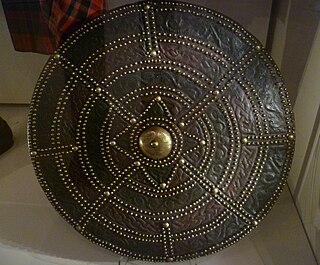
The targe is a type of shield that was used by Scottish Highlanders in the early modern period. From the late 16th century, until the Battle of Culloden in 1746, the Scottish Highlander's main means of defence in battle was his targe. In February 1596, the clan leader John Grant of Freuchie was able to muster 500 men, including 40 armed "according to the Highland custom" with bows, helmets, swords, and targes. After the disastrous defeat of the Jacobites at Culloden, the carrying of the targe had been banned by the Disarming Act, and many were destroyed or put to other uses. Those that remain have intricate patterns and are decorated, indicating that they would have originally belonged to important people.

The culture of the Isle of Man is influenced by its Celtic and, to a lesser extent, its Norse origins, though its close proximity to the United Kingdom, popularity as a UK tourist destination, and recent mass immigration by British migrant workers has meant that British influence has been dominant since the Revestment period. Recent revival campaigns have attempted to preserve the surviving vestiges of Manx culture after a long period of Anglicisation, and significant interest in the Manx language, history and musical tradition has been the result.

The Highland charge was a battlefield shock tactic used by the clans of the Scottish Highlands which incorporated the use of firearms.

Highland dance or Highland dancing is a style of competitive dancing developed in the Scottish Highlands in the 19th and 20th centuries, in the context of competitions at public events such as the Highland games. It was created from the Gaelic folk dance repertoire, but formalised with the conventions of ballet, and has been subject to influences from outside the Highlands. Highland dancing is often performed with the accompaniment of Highland bagpipe music, and dancers wear specialised shoes called ghillies or pumps. It is now seen at nearly every modern-day Highland games event.
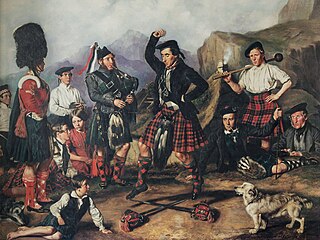
The Sword dance is one of the best known of all Highland dances, an ancient dance of war. Performance of sword dances in the folklore of Scotland is recorded from as early as the 15th century.
Scottish fiddling may be distinguished from other folk fiddling styles by its particular precision of execution and energy in the delivery, for example, the rendering of the dotted-quaver/semi-quaver rhythmic patterns, commonly used in the Strathspey. Christine Martin, in her Traditional Scottish Fiddling players guide, discusses the techniques of "hack bowing", "the Scotch snap", and "snap bowing". These techniques contrast quite sharply with the most common bowing patterns of Irish fiddling. The style has a very large repertoire consisting of a great variation of rhythms and key signatures. There is also a strong link to the playing of traditional Scottish bagpipes which is better known throughout the world.
The weapon dance employs weapons—or stylized versions of weapons—traditionally used in combat in order to simulate, recall, or reenact combat or the moves of combat in the form of dance, usually for some ceremonial purpose. Such dancing is quite common to folk ritual on many parts of the world. Weapon dancing is certainly ancient; among the earliest historical references we have are those that refer to the pyrrhichios, a weapon dance in ancient Sparta, in which the dance was used as a kind of ritual training for battle.
John Joseph Kneen was a Manx linguist and scholar renowned for his seminal works on Manx grammar and on the place names and personal names of the Isle of Man. He is also a significant Manx dialect playwright and translator of Manx poetry. He is commonly best known for his translation of the Manx National Anthem into Manx.
There is some evidence on historical fencing as practised in Scotland in the Early Modern Era, especially fencing with the Scottish basket-hilted broadsword during the 17th to 18th centuries.
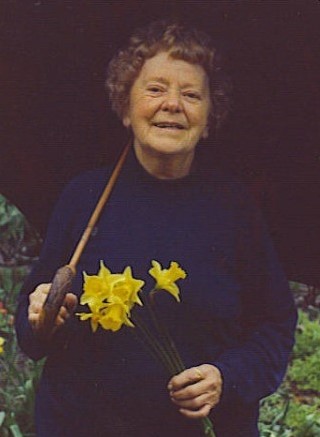
Mona Douglas was a Manx cultural activist, folklorist, poet, novelist and journalist. She is recognised as the main driving force behind the modern revival of Manx culture and is acknowledged as the most influential Manx poet of the 20th century, but she is best known for her often controversial work to preserve and revive traditional Manx folk music and dance. She was involved in a great number of initiatives to revive interest and activity in Manx culture, including societies, classes, publications and youth groups. The most notable and successful of these was Yn Chruinnaght.
Aeglagh Vannin was a youth group in the Isle of Man whose purpose was the engagement with and revitalisation of Manx language, history and culture. It was established by Mona Douglas in 1931, went through a number of mutations, and faded out in the 1970s. It is best remembered for its central role in the revival of Manx folk dancing.
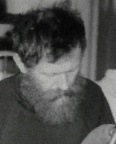
Colin Jerry was a Manx cultural activist best known for his contributions to Manx music through his books, Kiaull yn Theay, published in two volumes. He was awarded the Reih Bleeaney Vanannan in 1991 for his contributions to Manx culture which were 'extensive and staggering.'
Rinkaghyn Vannin is an important book of 28 Manx dances, mostly collected by Mona Douglas, which was published in 1983 by Sleih gyn Thie.
Hop-tu-naa is a traditional Manx dance connected to the hop-tu-naa festivities around 31 October in the Isle of Man. It is a simple processional dance for any number of two pairs of dancers. The dance shares its name with the festivities and the music to which the dance is connected.

Hunt the Wren is a traditional custom carried out on the Isle of Man on 26 December, Saint Stephen's Day. Traditionally, men and boys hunted a wren and placed it on top of a staff decorated with holly, ivy and ribbons, or displayed it in a decorated box on top of a pole. This was paraded around the neighbourhood by a group of 'wren boys'—typically dressed in straw masks, greenery and colourful motley clothing—who sang songs and played music in exchange for donations. The people afterwards held a funeral for the wren and danced around the 'wren pole' or 'wren bush'. The custom has been undergoing revival since the late 20th century, although the wren is no longer hunted and a stuffed wren is used instead. There is a very similar tradition on St Stephen's Day in Ireland, where it is known as Wren Day. It is speculated that the tradition derives from ancient Celtic paganism.
The Flitter Dance is a traditional dance from the Isle of Man associated with Good Friday. It was collected by Mona Douglas in the 1940s or 50s and is popular among younger Manx dancers today.
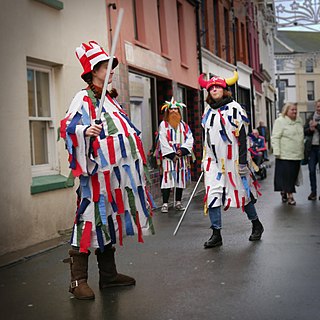
The White Boys is the traditional mummers' play of the Isle of Man.








